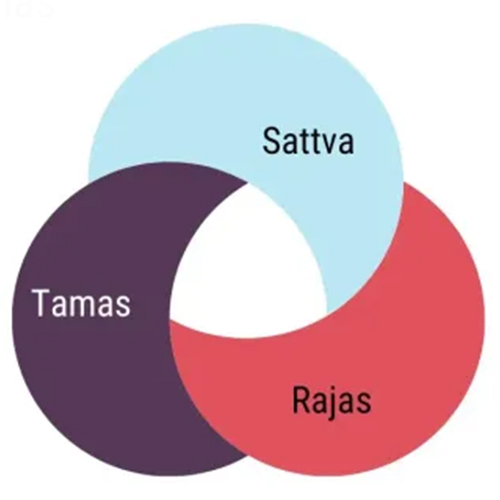Sade Sati is a seven-and-a-half-year phase that begins when Saturn transits into the twelfth house from the Natal Moon and continues as it moves through the first and second houses. This period is divided into three segments, each lasting about two and a half years, and is considered one of the most influential planetary transits in a person's life.
Saturn, or Shani, holds a prominent place in astrology as the planet of discipline, responsibility, and karmic lessons. Its slow movement and prolonged influence during Sade Sati tests an individual's patience, endurance, and ability to handle life's challenges. Saturn's transit through these key houses is said to trigger significant events that prompt introspection and personal growth.
Sade Sati is often surrounded by misconceptions and fears, with many people associating it solely with misfortune, obstacles, and suffering. Such views overlook the constructive aspects of this phase. While it can bring difficulties, Sade Sati primarily serves as a period of transformation, helping individuals confront unresolved issues and mature through experience rather than simply causing distress.
The significance of Sade Sati in an individual’s life journey lies in its transformative power. This phase acts as a catalyst for self-discovery, resilience, and the realignment of priorities. It encourages individuals to reflect on their actions, make necessary adjustments, and emerge stronger and wiser. Rather than being a period to dread, Sade Sati can be viewed as an opportunity for meaningful personal evolution.
What is Sade Sati?
Sade Sati is a period of 7.5 years in Vedic astrology that begins when Saturn transits over the twelfth house from the natal Moon, continues as Saturn moves into the Moon sign itself, and concludes as Saturn passes through the second house from the Moon. This transit is recognized for its profound impact on an individual’s life, marking a time of significant transformation, challenges, and personal growth. Saturn’s influence during this period is direct and sustained, affecting various aspects of life depending on the individual’s birth chart.
The timeline of Sade Sati is divided into three distinct phases, each lasting about 2.5 years. The first phase starts when Saturn enters the sign before the natal Moon, often bringing initial adjustments and the onset of new challenges. The second phase, when Saturn transits the natal Moon sign, is considered the most intense, as it can bring emotional, mental, and practical tests. The third phase occurs as Saturn moves into the sign after the natal Moon, gradually easing the intensity and often providing opportunities for recovery and new beginnings. Each phase brings its own set of circumstances and lessons, shaping the overall experience of Sade Sati.
However, Sade Sati is different from Shani Dasha, latter refers to the period in Vedic astrology when Saturn’s influence becomes predominant in an individual’s life. This is a time when Saturn acts as the main guiding force, shaping events and experiences according to the principles of discipline, karma, and justice. Shani Dasha is not limited to Sade Sati but represents any period governed by Saturn in the planetary cycle. During this time, individuals may face delays, obstacles, and tests, but these are intended to foster maturity, responsibility, and a deeper understanding of life’s realities. Saturn’s role is to teach through experience, rewarding sincere effort and integrity while prompting growth through challenges.
The Three Phases of Sade Sati
The first phase of Sade Sati begins when Saturn enters the twelfth house from the natal Moon. This stage often marks the onset of emotional turbulence, feelings of isolation, and increased expenses. Individuals may encounter financial instability, unexpected losses, or a sense of detachment from familiar surroundings. The twelfth house is linked to endings and transitions, so this period can prompt reflection on past actions and relationships, leading to a sense of uncertainty about the future. The emotional strain during this phase encourages individuals to reevaluate priorities and let go of attachments that no longer serve their growth.
The second phase unfolds as Saturn transits the first house from the natal Moon, which is the Moon sign itself. This is considered the most intense period of Sade Sati. The focus shifts inward, often manifesting as personal challenges, health concerns, and heightened self-reflection. Individuals may face obstacles in their professional or personal lives that test their resilience and adaptability. This phase can bring a sense of burden or pressure, compelling a deeper examination of one’s identity, motivations, and life direction. Saturn’s influence during this time is direct, pushing individuals to confront their limitations and develop greater self-discipline and maturity.
The third phase begins when Saturn moves into the second house from the natal Moon, signaling the conclusion of Sade Sati. During this period, the intensity of challenges typically lessens, and there is often a gradual improvement in financial matters and emotional stability. Individuals may start to see the results of the lessons learned during the earlier phases, experiencing increased confidence and a clearer sense of purpose. Although the difficulties may subside, the insights and growth gained continue to influence decisions and perspectives, shaping a more balanced and resilient approach to life moving forward.
How Sade Sati Affects the Individual
Sade Sati influences various aspects of an individual’s life, shaping psychological, emotional, physical, and financial experiences. Each area faces unique challenges during this period, ultimately encouraging personal growth and resilience.
Psychological Impact
Sade Sati often brings mental stress, confusion, and frustration as Saturn’s transit challenges an individual’s mental resilience. This period tests patience and endurance, leading to periods of doubt and anxiety. The slow and steady influence of Saturn forces introspection, which can initially cause mental unrest but ultimately promotes growth and maturity.
Emotional Impact
During Sade Sati, individuals may experience a sense of detachment, fear, or loneliness. Saturn’s influence can create emotional distance from loved ones and a feeling of isolation. This phase encourages emotional resilience by confronting fears and unresolved emotional issues. The emotional challenges serve as a catalyst for deeper self-awareness and emotional strength, helping individuals to overcome fears and build lasting inner stability.
Physical Impact
Sade Sati can manifest physically, especially when Saturn transits the first house from the natal Moon. This phase may bring health-related issues such as fatigue, chronic ailments, or stress-induced conditions. The physical impact is often a reflection of the mental and emotional strain experienced during this period. Maintaining a disciplined lifestyle, proper diet, and regular health checkups can help mitigate these effects. Saturn’s influence urges individuals to take responsibility for their physical well-being and adopt healthier habits.
Financial Impact
Financial instability is a common aspect of Sade Sati, particularly during the first and third phases of the transit. Individuals may face potential losses, unexpected expenses, or unstable income sources. This period challenges financial management skills and encourages prudent decision-making. While difficulties may arise, the lessons learned promote long-term financial discipline and responsibility. Saturn’s influence helps individuals build a more secure financial foundation through careful planning and perseverance.
Key Astrological Factors That Influence Sade Sati
Placement of Saturn in the Birth Chart
The position and strength of Saturn in an individual’s birth chart play a decisive role in shaping the effects of Sade Sati. A well-placed Saturn, especially if it occupies favorable houses or signs, can mitigate hardships and even bring growth opportunities. Conversely, a weak or afflicted Saturn may intensify challenges, delays, and obstacles. The dignity of Saturn, its conjunctions, and aspects with other planets further refine how its influence unfolds during this period.
Moon’s Position in the Natal Chart
Sade Sati is calculated based on the Moon’s sign at birth, as the Moon represents the mind and emotions in Vedic astrology. The sign and house occupied by the Moon determine the areas of life most affected by Saturn’s transit. A strong Moon can provide emotional resilience, while a weak or afflicted Moon may heighten emotional sensitivity and stress during Sade Sati. The Moon’s nakshatra and its relationships with other planets also influence the intensity and nature of experiences during this phase.
Influence of Aspecting Planets
The impact of Sade Sati is shaped not only by Saturn’s transit but also by the aspects and positions of other major planets, particularly Jupiter, Rahu, and Ketu. Favorable aspects from Jupiter can soften Saturn’s effects, offering support and relief at crucial moments. Unfavorable aspects from malefic planets can exacerbate difficulties, leading to increased stress or setbacks. The overall planetary environment during Sade Sati determines whether the period is predominantly challenging or offers opportunities for constructive transformation.
Importance of Individual Chart Analysis
Each person’s experience of Sade Sati is unique, shaped by their complete birth chart and the interplay of planetary influences. Understanding one’s individual chart is essential for navigating this period effectively. A thorough astrological analysis reveals the specific areas of life most impacted, the likely intensity of challenges, and the best strategies for growth and resilience. Personalized guidance helps individuals make informed decisions, manage stress, and harness the transformative potential of Sade Sati.
Types of Sade Sati
Kantaka Shani
Kantaka Shani occurs when Saturn transits the first, fourth, eighth, or tenth house from the Moon Sign, Lagna (Ascendant), or Arudha Lagna in the natal chart. This phase is marked by persistent difficulties across personal, professional, and social spheres. The experience is often compared to a thorn in the foot, causing setbacks and obstacles in all areas of life. When Saturn transits from the Moon Sign, emotional imbalance, depression, and health issues can arise as the Moon governs emotions and physical well-being. A transit from the Lagna can lead to poor decision-making and confusion, as the ascendant represents intellect and judgment. When Saturn transits from the Arudha Lagna, career setbacks and financial losses are likely, as this point reflects one’s public image and professional standing.
Elinati Shani
Elinati Shani is the classic seven and a half year Sade Sati period, where Saturn transits the twelfth, first, and second houses from the natal Moon. Each phase lasts about two and a half years and is further categorized for clarity. Viraya Sani is the initial two and a half years when Saturn is in the twelfth house, often bringing detachment and expenditure. Janma Sani is the next two and a half years as Saturn moves through the house of the Natal Moon, intensifying personal and psychological challenges. Patha Sani, the final segment, covers Saturn’s transit through the second house from Natal Moon, impacting family and finances. Elinati Shani can occur up to three times in a lifetime, known as Mangu Shani (first occurrence, usually before age 30), Pongu Shani (second occurrence), and Marana Shani (third occurrence), each with its own intensity and lessons.
Janma Sani
Janma Sani refers specifically to the middle phase of Sade Sati, when Saturn transits the first house from the natal Moon. This period is typically the most challenging, with pronounced effects on physical health, self-confidence, and relationships. Individuals may experience psychological stress, diminished motivation, and disruptions in family and professional life. The pressure during Janma Sani often forces deep self-reflection and transformation, laying the groundwork for future growth.
Shani Panoti (Small Panoti or Dhaiyya)
Shani Panoti, also known as Dhaiyya or Small Panoti, is a shorter, two and a half year transit of Saturn through the fourth or eighth house from the Natal Moon. While not as intense as Sade Sati, this period can still bring hardships, particularly related to emotional well-being, family matters, and professional setbacks. Kantaka Shani and Ashtama Shani are specific forms of Panoti, occurring with Saturn’s transit through the fourth and eighth houses, respectively. The challenges are usually manageable but serve as reminders of Saturn’s role as a teacher and disciplinarian.
Ezharai Sani
Ezharai Sani is another regional term for Sade Sati, especially used in South India. It refers to the same seven and a half year period of Saturn’s transit from the twelfth to the second house from the Natal Moon, encompassing the classic phases and their associated effects.
Understanding these types of Sade Sati and related Saturn transits provides clarity on the nature and timing of challenges, helping individuals prepare and adopt suitable remedies for smoother navigation through these astrological periods.
Remedies for Sade Sati
Worship of Bhagwan Shani
Regular prayers to Bhagwan Shani are considered a powerful remedy during Sade Sati. Devotees offer oil, black sesame seeds, and light lamps on Saturdays to seek Saturn’s blessings. Worship rituals often include reciting Shani Chalisa or visiting Shani temples, to reduce hardships and promote mental peace. Consistent devotion helps foster discipline and humility, aligning one’s actions with Saturn’s principles.
Sadesati Puja
Rudra Centre offers Sade Sati Puja to ease the effects of Sade sati on the devotee’s life. This puja should be performed once in every phase of Sade Sati to ease the effects of Shani Sade Sati & help one align with the lessons of Saturn.
Shani Mantras
Chanting specific mantras dedicated to Saturn, such as the Shani Stotra, Shani Gayatri Mantra, or Mahamrityunjaya Mantra, is recommended for protection and relief from Sade Sati’s challenges. These mantras are recited to invoke Saturn’s positive energy, calm the mind, and dispel negativity. Regular chanting, especially on Saturdays, is said to strengthen inner resolve and attract spiritual support during difficult times.
Shani Moola Mantra
ॐ शं शनैश्चराय नमः
Om Sham Shanaishcharaya Namah
Shani Beeja Mantra:
ॐ प्रां प्रीं प्रौं सः शनैश्चराय नमः
Om Pram Prim Proum Sah Shanaishcharaya Namah
Shani Gayatri Mantra:
ॐ सूर्यात्मजाय विद्महे मृत्युरूपाय धीमहि तन्नः सौरिः प्रचोदयात
Om Suryatmajaya Vidmahe Mrityurupaya Dhimahi. Tannah Saurih Prachodayat
Shani Pranama Mantra:
ॐ नीलांजन समाभासं रविपुत्रं यमाग्रजम्। छाया मार्तण्डसंभूतं तं नमामि शनैश्चरम्
Om Nilanjana Samabhasam Raviputram Yamagrajam. Chhaya Martanda Sambhutam Tam Namami Shanaishcharam
Shani Vedic Mantra:
ॐ शन्नोदेवीर भिष्टयऽआपो भवन्तु पीतये शंय्योरभिस्त्रवन्तुनः।
Om Shannodevira Bhishtayaapo Bhavantu. Pitaye Shanyyo Rabhistravantunah
Shani Ekakshari Mantra:
Sham (शं)
Donations and Charity
Acts of charity hold special significance during Sade Sati. Offering food, clothes, or essential items to the poor and needy, particularly on Saturdays, appeases Saturn and reduce the intensity of the transit. These acts not only fulfill Saturn’s karmic expectations but also cultivate compassion and humility, which are central to overcoming the challenges associated with this period.
Feed Goats for Blessing of Shani Dev
Rudraksha Beads and Gemstone Therapy
Wearing a Shani Rudraksha mala is important for spiritual strength and emotional stability during Sade Sati. 17 Mukhi Rudraksha, associated with Saturn, balance energies and protect against negative influences. Additionally, gemstone therapy, such as wearing a blue sapphire or amethyst, may be recommended after astrological consultation. These remedies are chosen based on the individual’s birth chart to enhance Saturn’s positive effects and support overall well-being.
Explore Blue Sapphire Gemstone
Common Myths About Sade Sati
Sade Sati is Purely Negative and Brings Only Misfortune
The belief that Sade Sati is entirely negative is a misconception. While this period is associated with challenges and tests, it also offers opportunities for growth, self-improvement, and spiritual development. Saturn’s influence encourages individuals to confront their weaknesses, learn discipline, and build resilience. Many people experience positive transformations, breakthroughs, or rewards for sincere effort during Sade Sati, making it a time of both trials and progress.
It is Impossible to Overcome the Difficulties of Sade Sati
Another common myth is that the hardships of Sade Sati cannot be managed or overcome. In reality, the intensity and nature of challenges depend on individual karma, planetary positions, and personal choices. With self-awareness, discipline, and appropriate remedies, individuals can navigate this period effectively. Acts of charity, spiritual practices, and positive lifestyle changes can help reduce difficulties and foster inner strength, enabling people to emerge stronger from this phase.
The Impact of Sade Sati is the Same for Everyone
Sade Sati does not affect everyone in the same way. Its impact varies based on the person’s birth chart, the strength and placement of Saturn, and the influence of other planetary aspects. For some, Sade Sati may bring significant obstacles, while others may experience steady progress or even beneficial outcomes. The unique combination of astrological factors and personal karma shapes each individual’s experience, making it essential to analyze the birth chart for accurate predictions.
Remedies Have No Real Effect During Sade Sati
It is a misconception that remedies are ineffective during Sade Sati. While no remedy can completely eliminate Saturn’s karmic lessons, spiritual practices, charity, mantra chanting, and disciplined living can significantly reduce the intensity of challenges. These measures help align one’s actions with Saturn’s principles, promote mental peace, and attract positive outcomes. Consulting an experienced astrologer for personalized guidance can further enhance the effectiveness of remedies during this period.
The Importance of Patience and Perseverance
Understanding that Sade Sati is a Time of Growth and Transformation
Sade Sati is not merely a period of hardship but a significant phase for personal evolution. Saturn’s transit is designed to test and refine an individual’s character, pushing them to confront weaknesses and develop resilience. The challenges faced during this time encourage self-reflection, discipline, and a reassessment of priorities. Many find that, by the end of Sade Sati, they have gained wisdom, maturity, and a deeper sense of purpose. This period acts as a catalyst for both spiritual and practical growth, offering a unique opportunity to transform adversity into strength.
How Challenges Faced During Sade Sati Help Shape an Individual’s Destiny and Spiritual Path
The obstacles encountered throughout Sade Sati are not random misfortunes but are closely tied to one’s karmic journey. Saturn’s influence compels individuals to address unresolved issues, take responsibility for their actions, and make necessary changes. These experiences shape destiny by instilling perseverance, humility, and a greater understanding of life’s responsibilities. Spiritually, Sade Sati fosters detachment from superficial desires and encourages a focus on inner development. The lessons learned during this period often lead to long-term stability and a more meaningful connection to one’s spiritual path.
The Role of Faith, Patience, and Persistence in Overcoming Sade Sati
Navigating Sade Sati successfully requires unwavering faith, patience, and consistent effort. Saturn rewards those who approach challenges with a disciplined mindset and a willingness to learn. Faith provides the strength to endure setbacks, while patience allows individuals to accept delays and trust the process of transformation. Persistence ensures that progress continues, even when results are not immediate. By embracing these qualities, individuals can not only withstand the trials of Sade Sati but also emerge from it with renewed confidence, resilience, and spiritual fulfillment.
Is Sade Sati a Blessing in Disguise?
Sade Sati is often viewed with apprehension, but beneath its challenging surface lies a powerful opportunity for personal evolution. Saturn’s influence during this period is not just about trials and setbacks, it is about reshaping character, deepening wisdom, and unlocking spiritual strength. By embracing the lessons and changes that Sade Sati brings, individuals can transform adversity into a journey of growth and lasting fulfillment.
How Saturn’s Lessons During Sade Sati Lead to Ultimate Spiritual Growth
Sade Sati serves as a period where Saturn compels individuals to face their deepest fears, insecurities, and unresolved karma. Through sustained challenges, Saturn teaches the value of discipline, self-control, and detachment from material distractions. These lessons foster a deeper understanding of life’s impermanence and encourage a shift toward spiritual pursuits. By learning to accept and work through difficulties, individuals develop inner strength and wisdom, which are essential for spiritual advancement.
The Importance of Facing Hardships with a Positive Attitude
Adopting a positive outlook during Sade Sati transforms obstacles into stepping stones for growth. When individuals approach hardships with acceptance and optimism, they become more resilient and adaptable. This mindset not only reduces stress but also opens the door to creative solutions and new opportunities. A positive attitude helps break the cycle of fear and negativity, allowing the individual to extract valuable life lessons from every challenge faced during this period.
Personal Transformation During This Period and the Ultimate Benefit It Brings After Completion
Sade Sati initiates a profound internal transformation, leading to greater self-awareness and maturity. The trials encountered push individuals to reassess their values, relationships, and long-term goals. By the end of this phase, most people find themselves stronger, wiser, and more grounded. The ultimate benefit is a renewed sense of purpose and clarity, enabling individuals to move forward with confidence and a deeper connection to their spiritual path.
When Does Sade Sati End?
How to Calculate the End of Sade Sati Based on Planetary Transits
Sade Sati concludes when Saturn completes its transit over the twelfth, first, and second houses from the natal Moon. To determine the end, one must track Saturn’s movement from the twelfth sign relative to the Moon sign, through the Moon sign itself, and finally out of the second sign. The period spans approximately seven and a half years, with each phase lasting about two and a half years. Once Saturn leaves the second house from the natal Moon, Sade Sati officially ends.
The Signs That Indicate Relief and Growth After Sade Sati
Relief from Sade Sati often manifests as a noticeable reduction in mental stress, emotional burdens, and recurring obstacles. Individuals may experience greater stability in finances, relationships, and health. There is a renewed sense of optimism, clarity, and motivation to pursue new goals. Many also report increased self-confidence and a deeper understanding of their strengths, signaling a period of growth and positive transformation following the end of Sade Sati.
Importance of Regular Horoscope Checking to Track Saturn’s Movement
Regularly reviewing one’s horoscope is essential for accurately tracking Saturn’s transit and understanding its influence on current life events. Monitoring Saturn’s position helps anticipate key transition points, such as the conclusion of Sade Sati, and allows for timely preparation and adjustment. Staying informed through horoscope analysis also supports better decision-making and helps individuals make the most of the relief and opportunities that follow this significant astrological phase.
Embracing Sade Sati: A Journey Toward Inner Strength
Sade Sati stands as one of the most transformative phases in Vedic astrology, guiding individuals through a period of deep self-examination and personal evolution. The spiritual significance of this transit lies in its ability to strip away illusions, reveal hidden strengths, and foster genuine resilience. Saturn’s influence compels a person to confront limitations, refine character, and develop a disciplined approach to life. Rather than viewing Sade Sati as a time of misfortune, it should be recognized as a powerful catalyst for growth and self-mastery.
Facing the challenges of Sade Sati with courage and openness leads to lasting wisdom and maturity. This period encourages letting go of outdated patterns, embracing responsibility, and discovering the true potential within. By accepting the lessons Saturn brings, individuals are better equipped to navigate future obstacles and achieve lasting fulfillment.
Seeking guidance from a knowledgeable astrologer can provide clarity on personal strengths and vulnerabilities, offering practical strategies to move through this phase with confidence and peace of mind. Sade Sati, when approached with the right mindset, becomes not just a test, but a profound opportunity for spiritual and personal advancement.
Benefits After Sade Sati
The period following Sade Sati often marks a profound transformation in an individual’s character and outlook. The challenges faced during these years strip away external support systems, compelling a person to develop self-reliance and inner strength. This process leaves a lasting impact on the mind and decision-making abilities, fostering greater maturity and resilience. Many experience increased clarity, a positive mindset, and a renewed sense of purpose.
Professionally and personally, individuals often find themselves achieving greater success and recognition, as the discipline and perseverance cultivated during Sade Sati begin to yield tangible rewards. Relationships with friends and loved ones tend to improve, marked by deeper understanding and empathy. Good health and emotional stability become more attainable as stress lessens and optimism returns.
The hardships of Sade Sati ultimately foster compassion, humility, and a genuine appreciation for humanity, leading to a more balanced and fulfilling life.


-in-Astrology.jpg)






.jpg)



Dev Kumar
|November 29, 2023
Hii